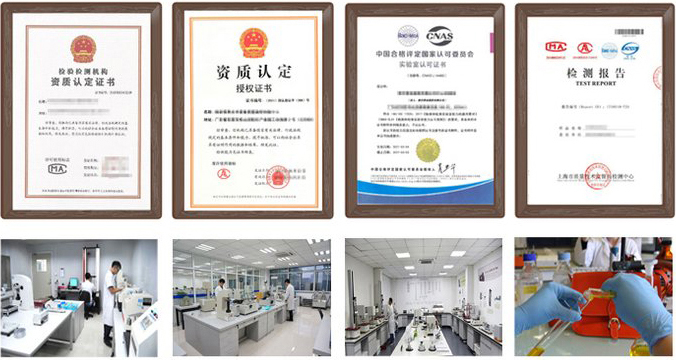Analysis and testing of the active ingredients in toilet waterHow to apply for a report? What items need to be tested? We will conduct testing and evaluation in strict accordance with the standards. We can also provide personalized testing plans and reports according to your needs.
As a common daily product, the analysis and detection of the active ingredients of toilet water is crucial to ensure product quality and safety. The following are the main methods for the analysis and detection of the active ingredients of toilet water:
1. Sensory detection method
The sensory detection method is an intuitive and simple detection method, which mainly includes the observation method and olfactory method.
Observation method: Check the color and transparency of toilet water with the naked eye to determine whether it meets the standard. Generally, toilet water should have uniform color and transparency, without stratification, precipitation, foreign matter, and other phenomena.
Olfactory method: Rely on the human olfactory system to evaluate the aroma of toilet water to ensure that it is not deteriorated or adulterated with foreign matter. Toilet water should have a pure and odorless aroma, and the aroma should be long-lasting and stable.
2. Chemical detection method
The chemical detection method is to determine the content and properties of the active ingredients in toilet water through chemical reactions or instrumental analysis.
Test paper method: Use special test paper to contact toilet water, and quickly detect the presence of specific chemicals according to the color change of the test paper. This method is easy to operate, but the accuracy is relatively low, and it is suitable for preliminary screening.
Spectrophotometry: Use a spectrophotometer to measure the absorbance of the sample solution at a specific wavelength to quantify the target component. This method has high precision and sensitivity and is suitable for quantitative analysis of a variety of chemical components.
Gas chromatography: It can separate and identify the components in a complex mixture and provide detailed component information. Gas chromatography has a wide range of applications in the analysis of floral water components and can be used to determine the content of volatile components such as alcohol and flavors.
High-performance liquid chromatography: It is used to determine the content of organic compounds such as flavors and fragrances, mosquito repellent ingredients, etc. in floral water. High-performance liquid chromatography has the advantages of good separation effect and high sensitivity and is suitable for the analysis of a variety of complex components.
3. Instrumental detection method
The instrumental detection method is to use advanced instruments and equipment to analyze and detect the effective components of floral water.
Atomic absorption spectroscopy: It is used to determine the content of trace metal elements in floral water, such as heavy metals such as lead, mercury, cadmium, and arsenic. This method has high precision and sensitivity and can ensure the safety of floral water.
Infrared spectroscopy: It is used to identify the structural characteristics of organic compounds in floral water. Infrared spectroscopy can provide functional group information of compounds, which helps to determine the composition and structure of floral water.
4. Comprehensive detection method
The comprehensive detection method combines multiple detection methods to conduct a comprehensive analysis of the effective ingredients of floral water. This method can more accurately understand the composition and quality of floral water, and provide strong support for product quality control and optimization.
5. Testing items
When analyzing and testing the effective ingredients of floral water, the following testing items are usually required:
Appearance detection: Check the color, transparency, and presence of stratification, precipitation, foreign matter, etc. of floral water.
pH value detection: Determine the pH of floral water to ensure that it meets the specified pH range.
Total volatile matter content detection: Determine the sum of all volatile ingredients in floral water, including alcohol and other possible organic solvents.
Methanol content detection: Measure the methanol content in floral water to ensure that it is within the safety limit.
Aroma component analysis: Analyze the main fragrance components and their proportions of floral water to ensure the fragrance quality and stability of the product.
Preservative content detection: measure the preservative content added to the floral water to verify whether it complies with relevant safety regulations and usage requirements.
Heavy metal content detection: detect the content of heavy metals such as lead, mercury, cadmium, and arsenic in the floral water to prevent it from exceeding the safety range.
In summary, the analysis and detection of the active ingredients of floral water requires the comprehensive use of multiple methods and technologies. Through sensory testing, chemical testing, instrument testing, and comprehensive testing, we can fully understand the composition and quality of floral water, providing strong support for product quality control and optimization.
Test report function
1、Project bidding: issue authoritative third-party CMA/CNAS qualification report;
2、E-commerce platform entry: quality inspection reports recognized by major e-commerce platforms;
3、Used as sales report: issuing a test report with legal effect to make consumers feel more at ease;
4、Papers and scientific research: providing professional and personalized testing needs;
5、Judicial services: providing scientific, fair and accurate testing data;
6、Industrial problem diagnosis: verifying the troubleshooting and correction of problems in industrial production;


 National free customer service telephone 400-101-7153
National free customer service telephone 400-101-7153 

